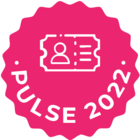Introduction
Accurate renewal forecasting is critical for ensuring predictable revenue and customer retention. By combining data-driven insights with CSM input, you can improve the accuracy of your renewal forecasts, allowing your team to take proactive action on at-risk renewals. This article will guide you through enhancing renewal forecast accuracy using Gainsight’s tools, ensuring that your team makes informed decisions based on real-time customer data.
Step 1: Capture Insights from CSMs and Customers
Gather insights from both CSMs and customers to improve your renewal forecasts:
-
Gather CSM Input via Surveys: Use Gainsight Surveys to collect renewal likelihood assessments from CSMs. This allows the team to capture qualitative feedback based on direct customer interactions.
-
Customer Sentiment Data: Track customer sentiment via NPS Surveys or customer feedback channels to assess how satisfied they are with your product and services. Customers with declining sentiment may require more proactive engagement before the renewal date.
Capturing insights from both CSMs and customers provides a holistic view of renewal likelihood and potential risks.
Step 2: Refine Renewal Forecast Models with Historical Data
Use historical data to refine your renewal forecasting models and improve accuracy:
-
Analyze Past Renewal Trends: Use Dashboards and Reports to analyze the performance of past renewals and identify patterns. For example, which health score indicators were predictive of successful renewals, and which led to churn?
-
Integrate Product Usage Data: Include product usage data from Adoption Explorer to refine forecasts. Customers who are using the product heavily are more likely to renew, while those with low usage may need immediate attention.
Historical data ensures that your forecasts are grounded in real-world outcomes, improving predictiveness.
Step 3: Automate Renewal Forecasts with Health Scores
Use health scores to automate and enhance your renewal forecasting:
-
Track Health Scores in Renewal Center: Use Renewal Center to monitor customer health and flag at-risk accounts. If a customer’s health score drops below a certain threshold, adjust the renewal forecast accordingly.
-
Automate Forecast Adjustments: Automate renewal forecast updates using the Rules Engine, ensuring that forecast models are continuously updated based on real-time customer data, such as declining product usage or negative feedback.
Automating renewal forecasts allows your team to react quickly to changes in customer health, improving forecast accuracy.
Step 4: Scenario Planning for Best and Worst-Case Outcomes
Develop scenario-based forecasts to prepare for different renewal outcomes:
-
Create Best and Worst-Case Scenarios: Build scenarios based on different variables, such as renewal rates, product adoption, and sentiment trends. For instance, forecast what might happen if health scores improve or deteriorate in the weeks leading up to renewal.
-
Plan for the Most Likely Outcomes: Use predictive analytics to identify the most likely renewal outcome and plan resources accordingly. Use Dashboards to visualize different renewal scenarios and their impact on revenue.
Scenario planning helps you prepare for a range of renewal possibilities, ensuring you’re ready for both the best and worst-case outcomes.
Next Steps for Success
With enhanced renewal forecast models:
-
Monitor health scores and feedback regularly: Use dashboards to continuously track customer health and sentiment to refine renewal forecasts.
-
Plan for different renewal scenarios: Use data to prepare for best and worst-case outcomes, ensuring your team is equipped to handle various renewal scenarios.
Explore More:
